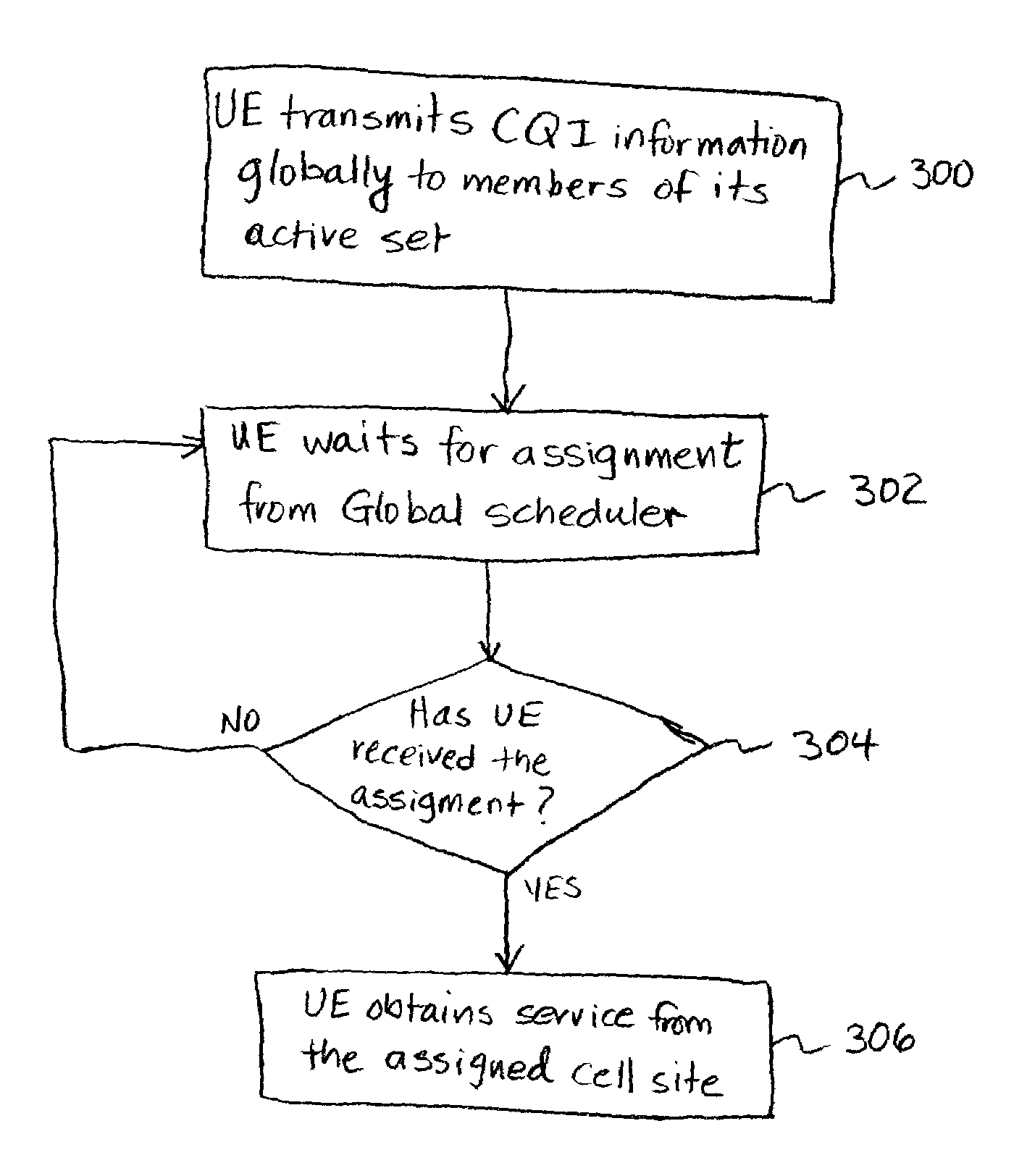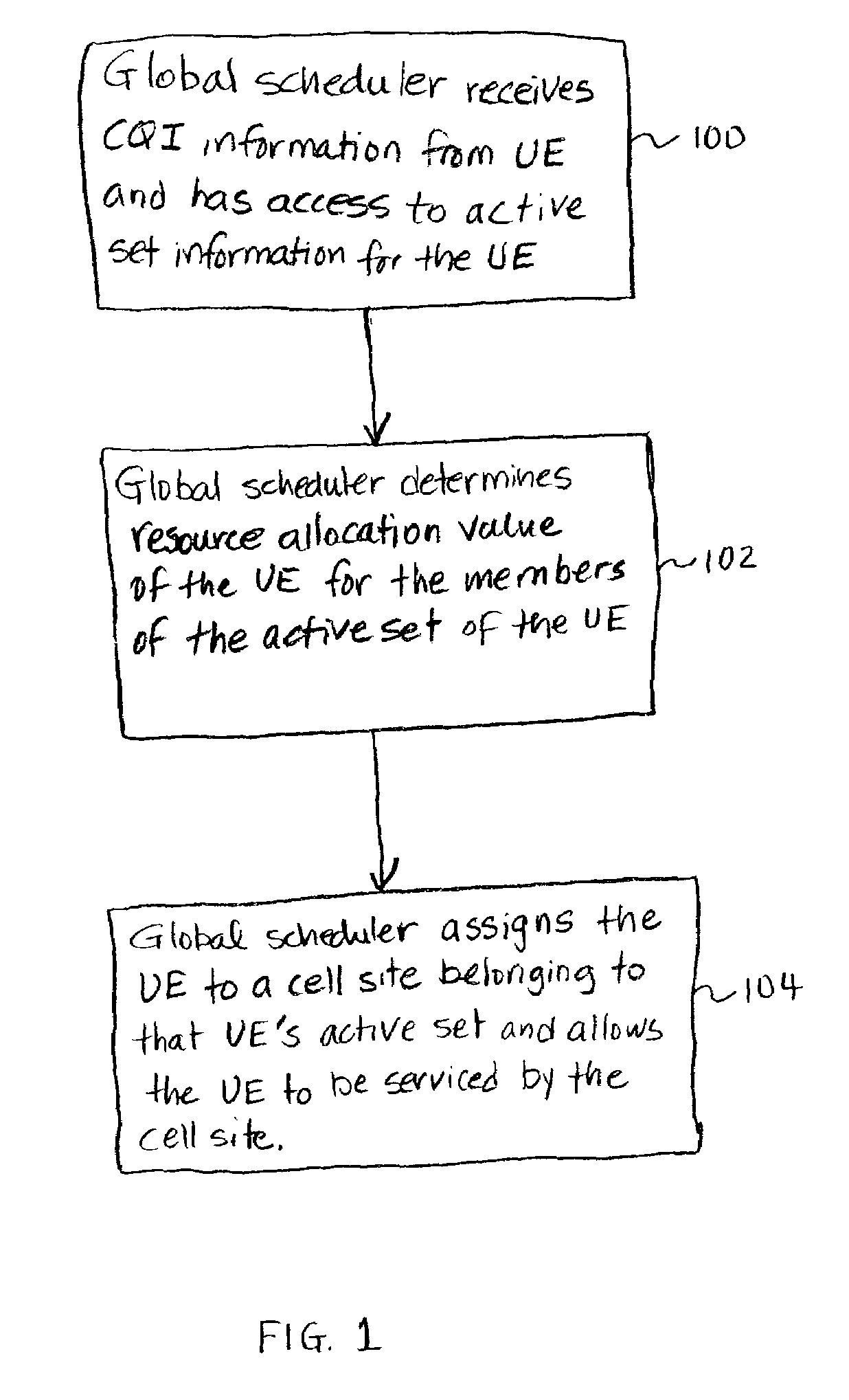Network controlled fast cell switching
a network control and cell technology, applied in the field can solve the problems of limited resources of wireless communication systems, inability to properly indicate cqi, and limited resources of each cell site, so as to improve overall system performance, improve scheduling flexibility, and improve overall system efficiency
- Summary
- Abstract
- Description
- Claims
- Application Information
AI Technical Summary
Benefits of technology
Problems solved by technology
Method used
Image
Examples
Embodiment Construction
[0016]The present invention provides a method of allocating at least one resource of a communication system to user equipment so as to improve overall system efficiency and provide improved scheduling flexibility. A global fast scheduler receives global CQI information of all UEs requesting service. The global fast scheduler thus knows which UEs want to be scheduled. The global fast scheduler also has access to the active set information of all the UEs. Based on the received global CQI information and the information on the active set of the UE, the global fast scheduler determines resource allocation values for the cell sites in the UE's active set. The global fast scheduler then assigns the UE to a cell site which has a resource allocation value—for the UE—that tends to improve overall system performance. The global fast scheduler is thus able to flexibly assign a UE to any cell site that is a member of the active set of that UE. As a result, the overall efficiency of the system i...
PUM
 Login to View More
Login to View More Abstract
Description
Claims
Application Information
 Login to View More
Login to View More - R&D
- Intellectual Property
- Life Sciences
- Materials
- Tech Scout
- Unparalleled Data Quality
- Higher Quality Content
- 60% Fewer Hallucinations
Browse by: Latest US Patents, China's latest patents, Technical Efficacy Thesaurus, Application Domain, Technology Topic, Popular Technical Reports.
© 2025 PatSnap. All rights reserved.Legal|Privacy policy|Modern Slavery Act Transparency Statement|Sitemap|About US| Contact US: help@patsnap.com



